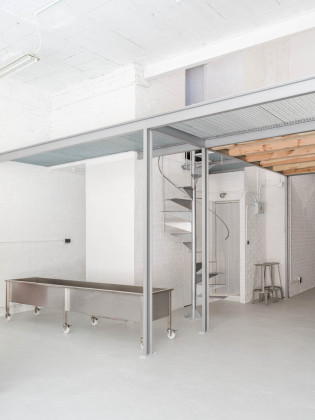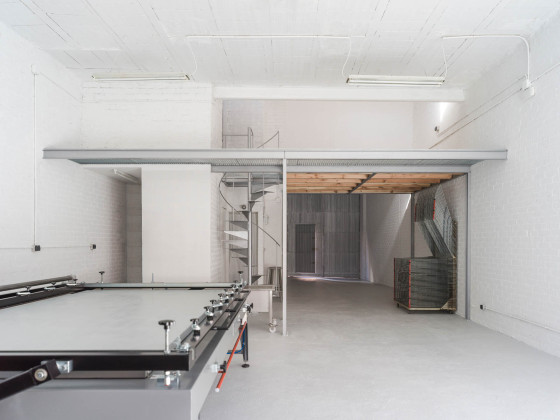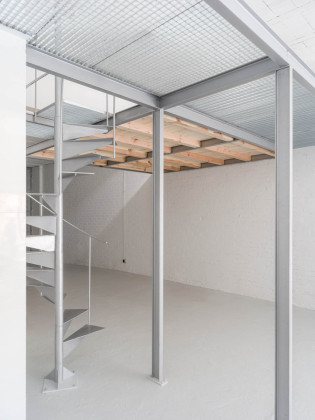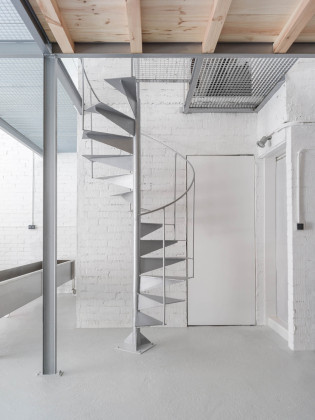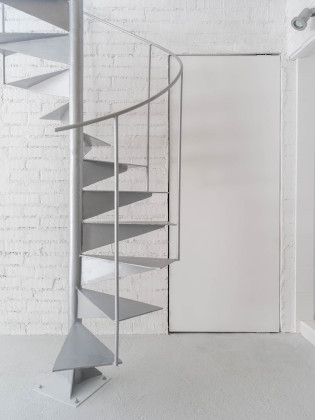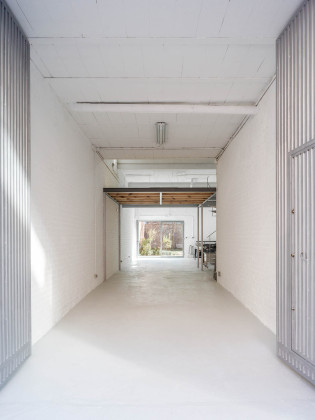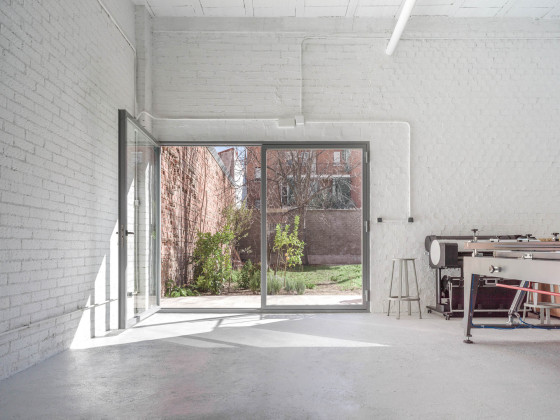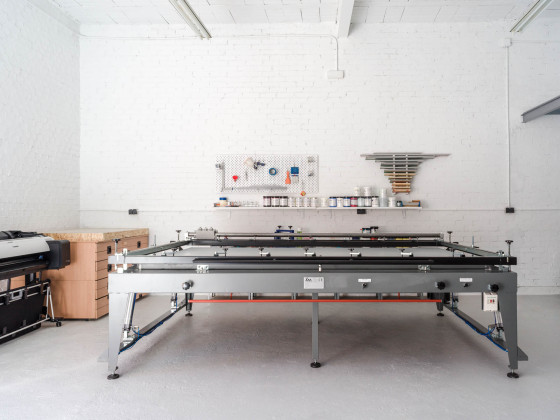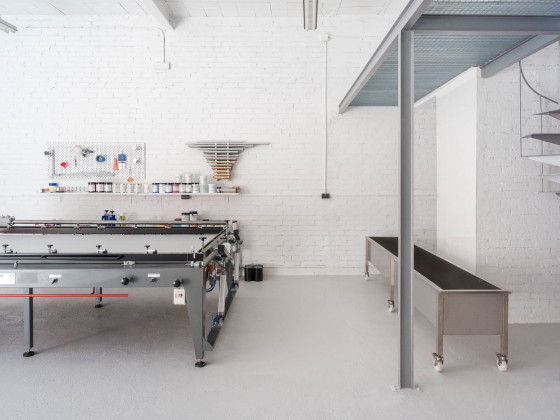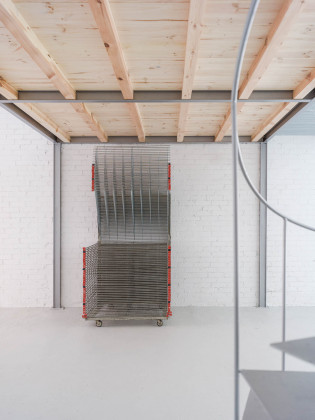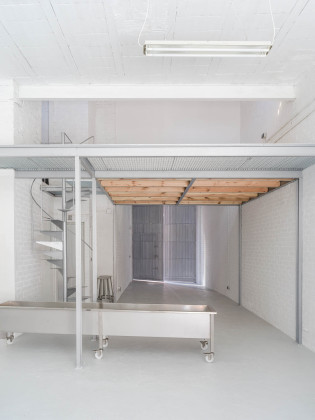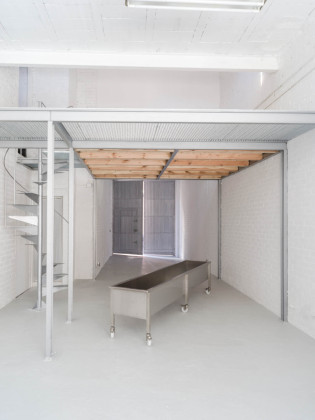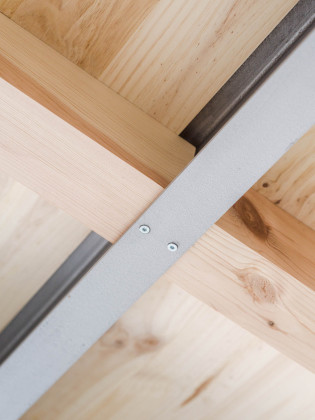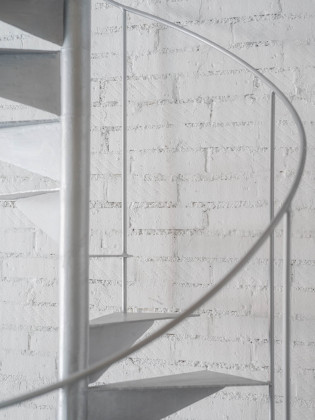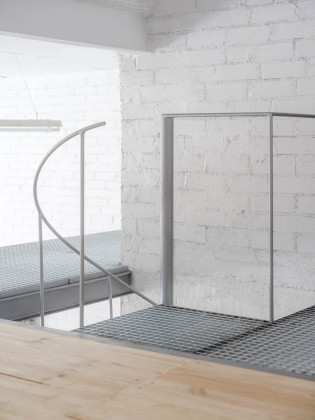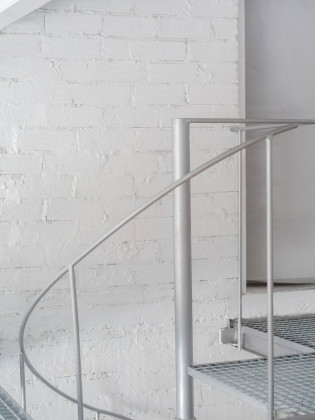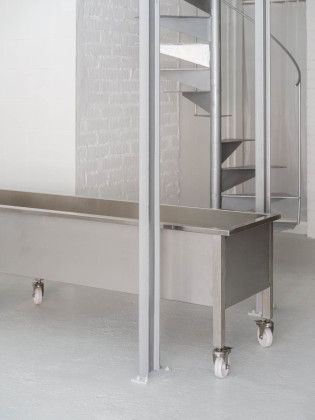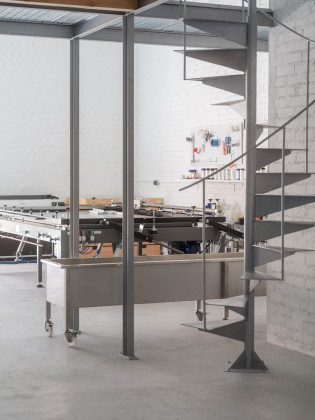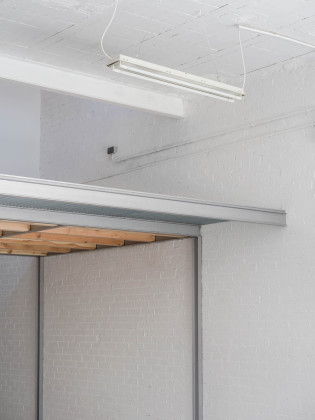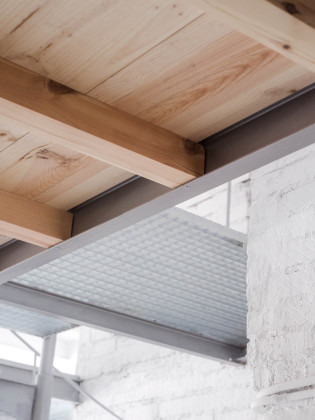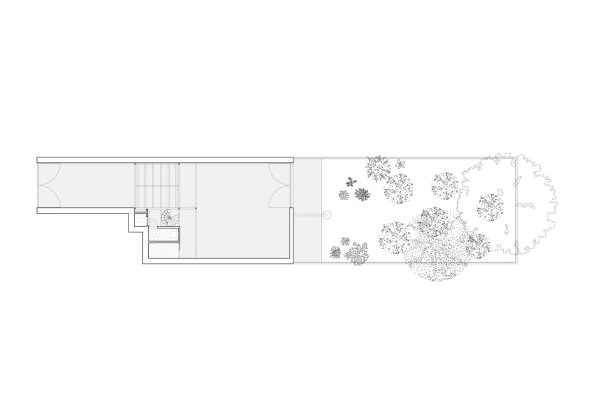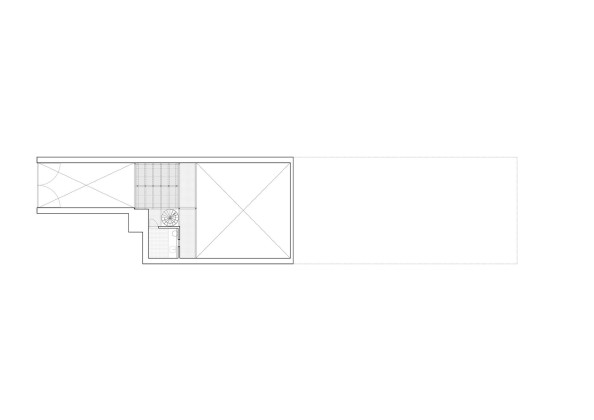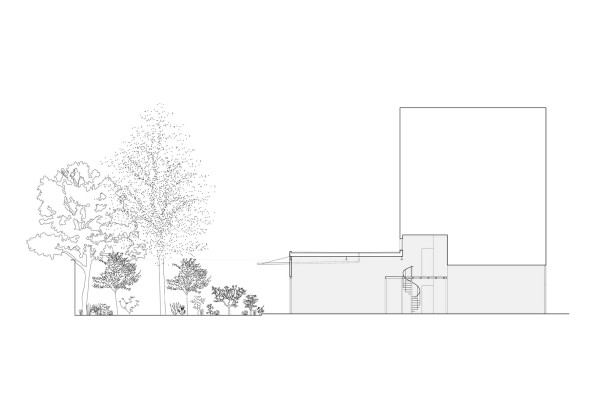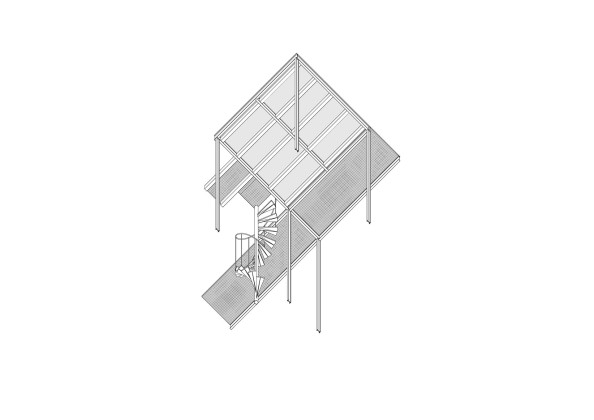LaCalor Serigraphy Studio
LaCalor Serigraphy Studio, designed by KAL A is located in Madrid, Spain. The office describes the project as follows:
Between the neighborhoods of Opañel and Comillas in the Carabanchel district of Madrid, La Calor opens an art and screen-printing studio run by artists Bruno del Giúdice and Candela Sotos.
The studio has a large open workspace of 90 sqm and a back garden of 120 sqm. Three main actions have been carried out: opening the rear façade to connect the studio with the garden, the construction of a light structure to create an upper floor space, and the complete refurbishment of the space.
The premises, a former carpentry workshop, only had access to the garden through a small opaque door. To link both spaces, part of the back façade has been demolished, and by installing a new lintel, a new large double door could be opened, emphasizing a fluid relationship between the interior and exterior spaces. This action, in addition to the color selected for the floor, enhances the natural lighting of the workspace, and reduces reliance on electrical lighting during the day.
To articulate the entire workspace, a new steel and wood structure has been assembled to create a second-floor space for an independent studio. The old linear staircase giving access to the upper floor has been replaced by a slender spiral staircase that optimizes and frees up the ground floor. Finally, the new workshop required a complete overhaul of the installations, taking advantage of the existing lighting and wiring.
The room needed for storing frames, tools, and graphic work, as well as toilets and a kitchen, will be integrated into the intermediate area of the workshop, enabling the screen-printing machinery to be freely available in the space. The printing machine enables working with three by two-meter frames, large format dimensions for artistic production, and both the washing cabin and the drying rack are mobile to allow the space to be used as needed.
All the elements, structure, and carpentry have been painted in metallic colors, enabling the intervention to blend in with the machinery, and so, the space will quietly take on the identity of its occupants.
 10.08.2023
10.08.2023



